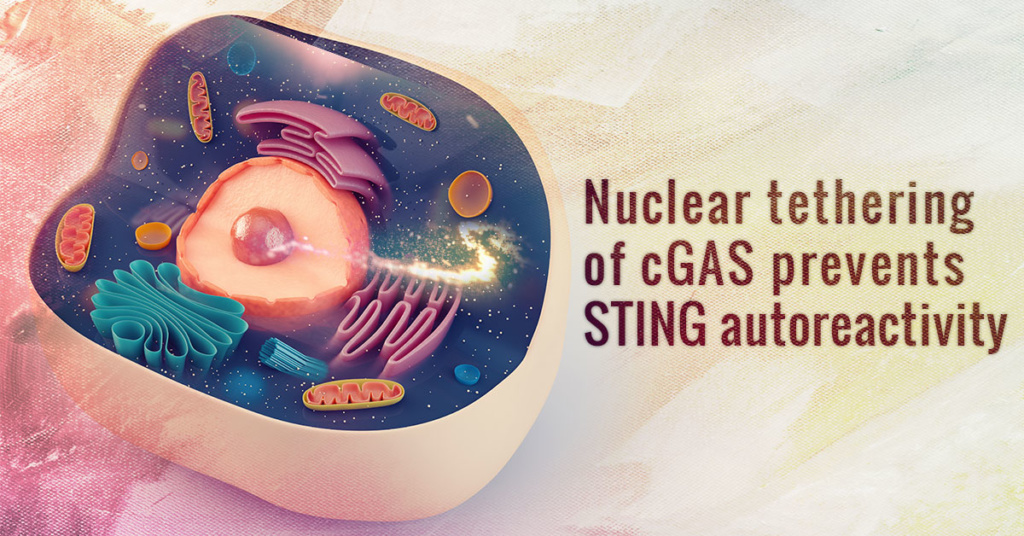Nuclear Tethering of cGAS Prevents STING Autoreactivity

The presence of DNA in the cytoplasm of eukaryotic cells is an alarm signal indicating cellular damage or microbial infection. The cGAS-cGAMP-STING DNA sensing pathway is a key activator of the innate immune response to foreign or harmful native DNA. In the current model, cyclic GMP-AMP Synthase (cGAS) catalyzes the formation of cyclic GMP-AMP (cGAMP) in response to double-stranded DNA binding in the cytoplasm. The cGAMP molecule acts as a second messenger to bind and activate Stimulator of Interferon Genes (STING). Dysregulation or aberrant activation of the pathway by self-DNA has emerged as an underlying cause of tumorigenesis and autoimmune disorders.
How this sequence-independent DNA sensing pathway avoids constant auto-reactivity against genomic DNA present in nucleated cells was not yet known. To address this question, a recent study by Volkman et. al, describes mechanisms of cGAS cellular localization and how tight nuclear tethering maintains the resting state of cGAS, preventing autoreactivity. The study uses the 2’,3’-Cyclic GAMP ELISA kit from Arbor Assays to measure cGAMP production and cGAS activity. The authors showed mutation of single amino acids within the tethering surface of cGAS caused untethering, rendering cGAS constitutively active against self-DNA. The study demonstrates that a tight nuclear tethering is essential for preventing autoreactivity. The authors note “the production of the diffusible second messenger cGAMP by cGAS provides a simple explanation for how activated nuclear cGAS could trigger the cytosolic signaling complex of STING, TBK1, and IRF3”.
